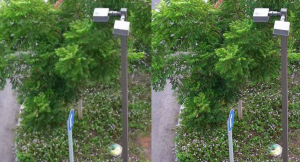UHD Upscaling is a feature built into modern Samsung TVs that enlarges lower-resolution content so it fills the entire 4K screen. Whether you’re watching through HDMI, a digital tuner, or another input source, this function ensures that videos originally in lower resolutions—such as Full HD (1080p)—are expanded to fit the full screen. Without upscaling, these videos would occupy only part of the display, which can be uncomfortable and distracting to watch.
How It Works and What It Really Means
While image scaling is a standard process used in all TVs, “UHD Upscaling” is essentially a marketing term. In the past, TVs had dedicated programs to handle image scaling. Today, this function is built directly into the TV’s processor, and similar technologies are now standard across most models.
Samsung claims that, unlike basic upscaling methods that simply stretch an image (often reducing detail), UHD Upscaling uses more advanced techniques to improve sharpness and clarity, resulting in a more natural-looking picture. However, in reality, most TVs don’t have the processing power required for truly high-quality upscaling. Effective upscaling demands significant CPU resources, which typical television hardware is not equipped to deliver.

Does UHD Upscaling Improve Picture Quality?
The impact of upscaling depends on the original resolution of the content. Upscaling from Standard Definition (SD) to UHD generally results in poor image quality, as the original has too few pixels to support a clean conversion. On the other hand, upscaling from Full HD (1080p) to UHD can produce a relatively high-quality image. Full HD offers a higher level of detail to begin with, allowing for more effective scaling and a clearer, more defined picture on a 4K screen.






